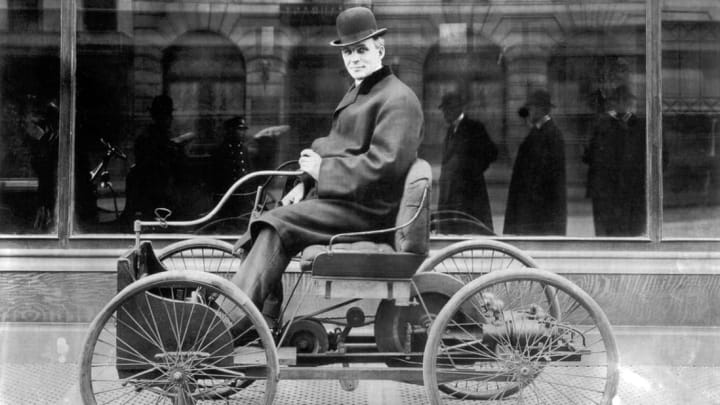Early in the morning on June 4, 1896, Henry Ford test-drove his Quadricycle for the first time. It was his first automobile, and he had built it in the shed behind his Detroit home. When he tried to move the Quadricycle out of the building, Ford realized the shed doors weren't wide enough to get the thing out. So he wielded an axe, knocking down a brick wall to enlarge the opening. That gave him room to begin his test drive.
At the time, Ford was Chief Engineer for Edison Illuminating Company, responsible for keeping electrical service running in Detroit. Around the edges of his work schedule, Ford found time to noodle on his Quadricycle. Ford was fascinated by the idea of ethanol-powered engines and lightweight motorized vehicles—this was an era when every car was a one-off, built to individual specifications. He figured that with enough fiddling, he could make a horseless carriage that really worked.
The Quadricycle was essentially a four-wheeled bicycle with an ethanol engine attached to the frame. The engine was a two-cylinder design producing four horsepower, powering the rear wheels. It had two gears: first was about 10mph, second was about 20mph. The whole assembled vehicle weighed 500 pounds. Ford built the engine—the key component—with friends at his kitchen table, based on a design he'd seen in a magazine.
The test drive went well, and the Quadricycle reached 20 miles per hour. It had no brakes, and its steering was awful, but with a compatriot riding ahead in a bicycle to clear the way, things went mostly according to plan. (They stopped by the Edison plant to replace a few parts that came loose.)
The Quadricycle was a success, and led Ford to continue pursuing his interest in gasoline-powered horseless carriages. He would produce the first Ford Model A in 1903.
Here's a snippet of old film showing the Quadricycle in action:
If you'd like a modern perspective on the Quadricycle, check out this Modern Driver test drive.
